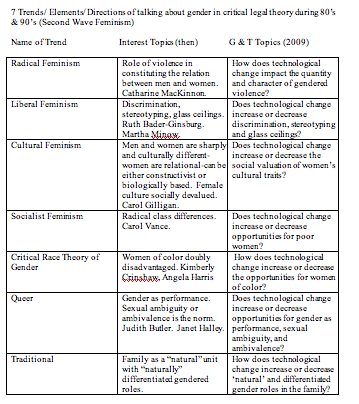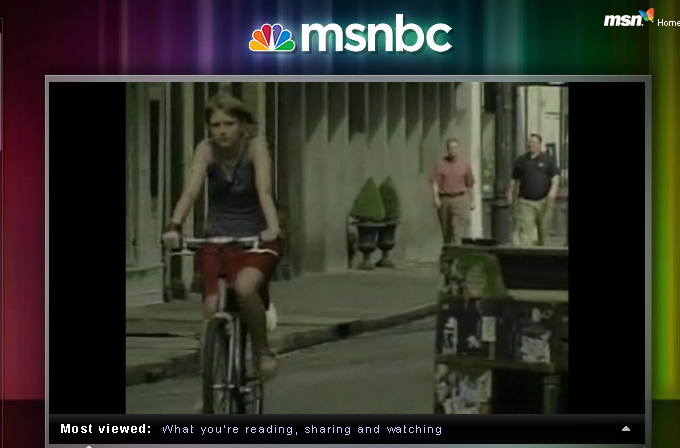Post by Morra Aarons Mele, consultant and blogger
I’m not a technologist and I can barely find my way around a piece of code. But I’ve been working on consumer-facing websites targeted to women on and off since 1999. In 1999, when I worked at the young website iVillage.com, our pitch to advertisers went like this, “Women make 80% of purchasing decisions. Women are online, talking to each other about everything from relationships to health to their favorite diaper brands (except at this point, it was on message boards, not blogs or social media platforms like Twitter). Clients, who were mostly consumer packaged goods (CPG) companies, bought ad space on iVillage to reach these influential, chattering women, in hopes that online users would buy, and talk about their products.
Today, the sales pitch on major social media platforms that cater to women is very similar, and now, women drive 82% of purchasing decisions. Some of the language is new: marketers want users to have “conversations” about their products, they want “brand evangelists,” and mostly, CPGs hope not to get slammed online (see the Motrin Moms case for a prime example). A big change is that while women on message boards in the 1990’s used handles or chose to remain anonymous, today’s online media stars use their real names and identities. Even more, many have become brands in their own right. But ultimately, the marketers’ goal is the same.
So enter social media, Web 2.0. Women and men use social media in equal numbers. Online social networks for women such as Twittermoms.com, Momversations, or MomsExtraordinaire on LinkedIn provide women safe and engrossing places to gather. Twitter users skew female, and according to TechCrunch, 60% of US Facebook users are women. For many women, participating in a gendered version of the social web brings them access to new networks, professional opportunities, and self-realization. It also gives women power.
The co-founder of BlogHer.com, the inimitable Jory des Jardins, sums up the power of her audience in this piece describing the growth of BlogHer’s power mom bloggers:
“As our online network grew, Moms became the largest segment. In a 2008 study comparing the readers of BlogHer Network bloggers versus the general population of U.S. women online, 46% of the 36 million women who actively blog every week have children living at home. Among Gen Xers who blog, the percentage increases to 67%. They trend above the general population in education, household income, and online spending….
And corporate America noticed: Companies such as P&G, GM, Kraft, Clorox, Wal-Mart, and countless others have sought MommyBloggers for their insights and online advocacy. PR agencies such as Fleishman Hilliard, Burson-Marsteller, and Ketchum have established Mom-focused practices and research.”
So the web has become a place where women can flex muscle, even as leadership roles for women in the corporate and political realms remain scarce. But what kind of power does the web afford these women? Has the rise of the social web reinforced traditional gender roles? It seems to me the social web has created a space where girls are more girly, boys will be even more like boys, and moms are uber?
At the Gender and Tech mini conference, law professors Dena Sacco and Diane Rosenfeld stressed how the ubiquity of online porn has a profound effect on how men see women, especially on how young men view young women. Does a nation of mommybloggers and giggling girls on MySpace also reinforce traditional gender stereotypes? We’re comfortable with women being outspoken on matters close to home. But while plenty of women bloggers write with intelligence and wit about everything from the economic crisis to foreign policy, they get rewarded (with advertiser money or media coverage) when they do stick closer to home. I don’t see that changing as social media becomes more ubiquitous; I see it being reinforced.
I don’t want to turn this into yet another piece debating the merits of mommyblogging (see Joanne Bamberger for that). I want to know:
Scholars, are you researching the gendered web and its affects on offline gender relations? Users, what impact do you think the gendered web has on gender relations?
Bloggers and those who participate as themselves in social media environments tend to act as their real selves, if not using their real names, at least assuming their real gender. At the Gender and Tech mini-conference, danah boyd referenced the early Internet scholars’ belief that the web would allow users to reject their everyday identity, including their real gender, in favor of a disembodied and free identity. In the 1990’s, Sherry Turkle and others pointed to the powerful impact of the Internet as a place to reconstruct gender and identity to suit one’s fancy, not reality. This didn’t happen. In fact, the opposite did.
As Vanessa Grigoriadis’ recent piece on Facebook notes: “Facebook’s relentless emphasis on literal representation…turns out to be the weapon to quell the web’s chaos. Now online life is a series of Victorian drawing rooms, a well-tended garden where you bring your calling card and make polite conversation with those of your kind…” To really use social media, we have to be real, but we can also be a little detached, a little less conscientious than we are in person. We also revert to behavior that comes naturally. Women like to talk a lot (see Susan Herring’s research on this) and men often use the opportunity to act like they’re on a bachelor weekend. Sexism comes too easily.
Social media spaces heighten the importance of gender, as we tend to congregate in places online with like-minded folks, and in places that feel safe. I can’t tell you how many progressive women I know who refuse to participate in the DailyKos.com community because of the sexism of its commenters. Instead, these women choose to congregate in a more female, safer space. In a 2001 article, boyd wrote, “the reliance on sex as a marker of identity online has encouraged a certain kind of re-embodiment of users (as sexed beings), with an attendant sexualizing of cyberspace.”
Mommybloggers, feminist bloggers, and others who participate in the online community as a gendered being would proudly say, “exactly,” in response to boyd’s claim. But does this gendering of online spaces simply further traditional, limiting gender roles? Or is it an extension of natural social life? Or even worse, a reaction against the threat of bad behavior on the Internet?










